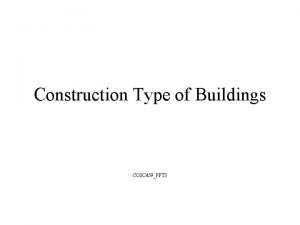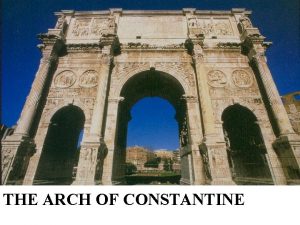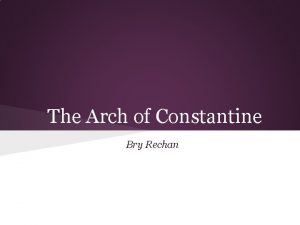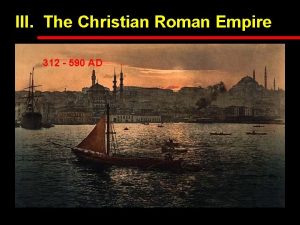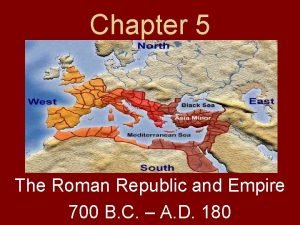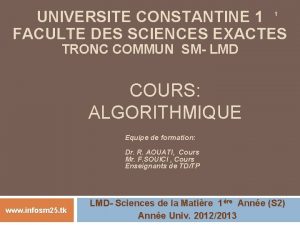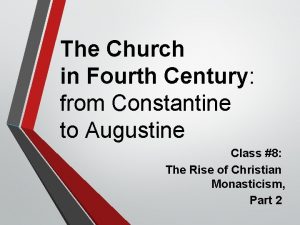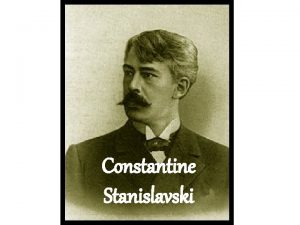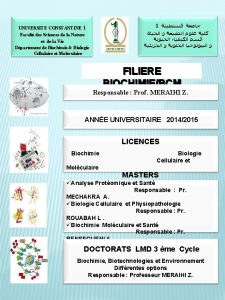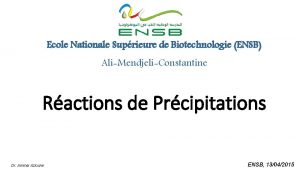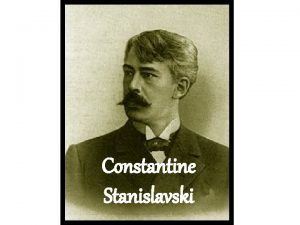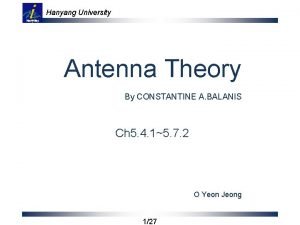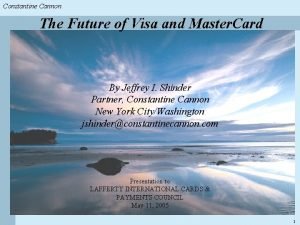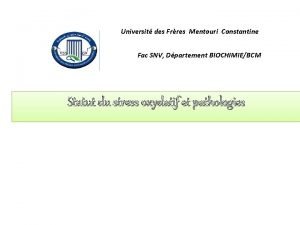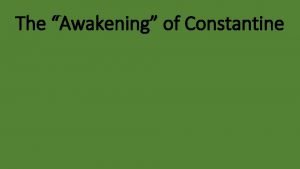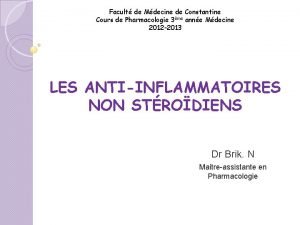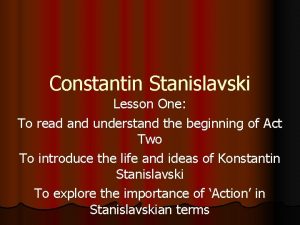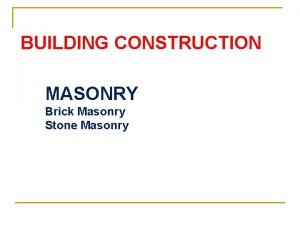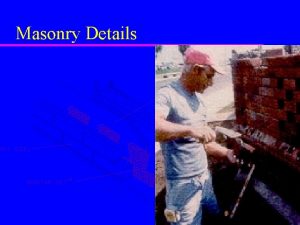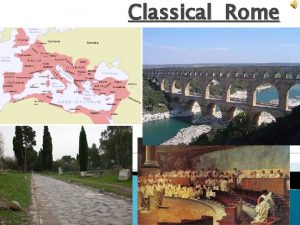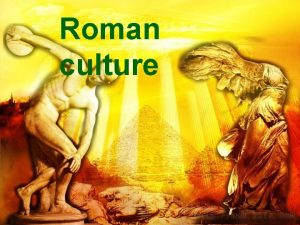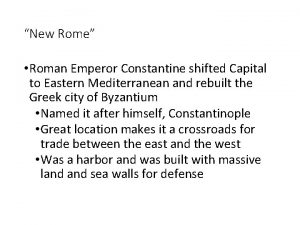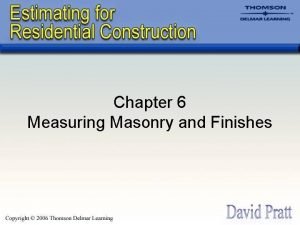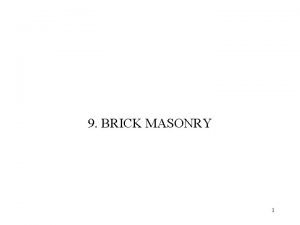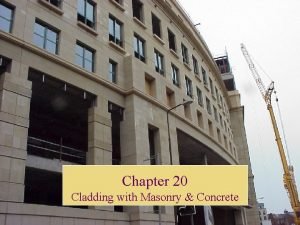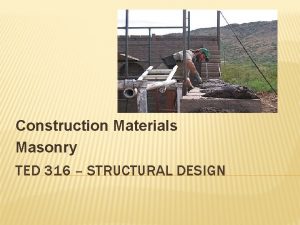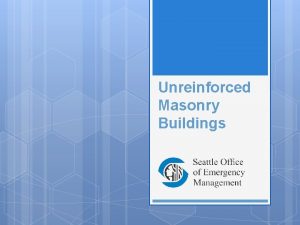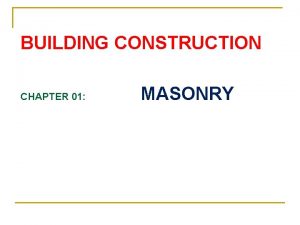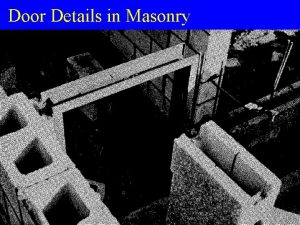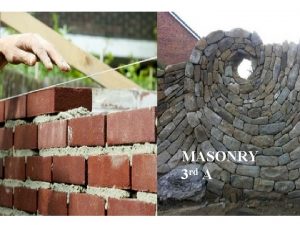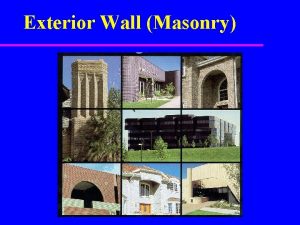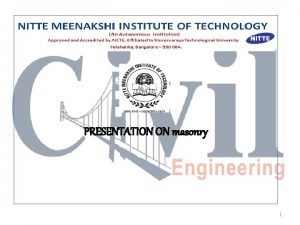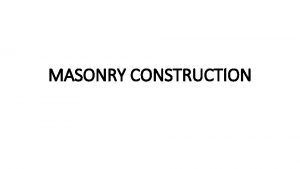Masonry Arch Roman Arch of Constantine Rome Masonry






















- Slides: 22

Masonry Arch Roman Arch of Constantine, Rome

• Masonry arches utilize the compressive strength of brick and stone to span openings by transforming the vertical forces of a supported load into inclined components. • Roman arch has a semicircular intrados. • Intrados is the inner curve of the visible face of an arch • The soffit is the inner surface of an arch forming the concave surface


• Voussoir – any of the wedge shaped units in a masonry arch, having side cuts converging at one of the arch centers. • brick course work or individual stone. • Skewback is a stone or course of masonry having a sloping face against which the end of a segmental arch rests.


• The keystone is the wedge-shaped, often embellished voussoir at the crown of an arch. • Crown – topmost part of the arch • Arch axis • Extrados is the exterior curve or boundary of the visible face of an arch. • Spring is the point at which an arch, vault, or dome rises from its support • Springing line


• Rise – is the height of an arch from the springing line to the highest point of the soffit • Spandrel – is the triangular-shaped area between the extrados of two adjoining arches,







Composition of Concrete • There are many types of concrete available, created by varying the proportions of the main ingredients below. • In this way or by substitution for the cementitious and aggregate phases, the finished product can be tailored to its application with varying strength, density, or chemical and thermal resistance properties.

Cementitious - Any of various building materials which may be mixed with a liquid, such as water, to form a plastic paste, and to which an aggregate may be added; includes cements, limes, and mortar.

• "Aggregate" consists of large chunks of material in a concrete mix, generally a coarse gravel or crushed rocks such as limestone, or granite, along with finer materials such as sand.

• "Cement", commonly Portland cement, serve as a binder for the aggregate.

• Water is then mixed with this dry composite, which enables it to be shaped (typically poured) and then solidified and hardened into rock-hard strength through a chemical process called hydration. The water reacts with the cement, which bonds the other components together, creating a robust stone-like material.

• "Chemical admixtures" are added to achieve varied properties. These ingredients may speed or slow down the rate at which the concrete hardens.

• "Reinforcements" are often added to concrete. Concrete can be formulated with high compressive strength, but always has lower tensile strength. For this reason it is usually reinforced with materials that are strong in tension (often steel).

• References: Building Construction Illustrated Francis DK Ching • http: //employees. oneonta. edu/farberas/arth/ arth 109/arch_vaults. html • http: //en. wikipedia. org/wiki/Concrete
 Joisted masonry vs masonry non combustible
Joisted masonry vs masonry non combustible The emperor constantine i recycled sculpture
The emperor constantine i recycled sculpture Arch of constantine location
Arch of constantine location To where did constantine move rome's capital
To where did constantine move rome's capital Roman brick arch
Roman brick arch Politheistic
Politheistic Roman republic vs roman empire
Roman republic vs roman empire Byzantine empire at its height
Byzantine empire at its height Faculté des sciences exactes constantine
Faculté des sciences exactes constantine Constantine
Constantine Constantine stanislavski
Constantine stanislavski Jim constantine
Jim constantine Constantine rise of christianity
Constantine rise of christianity Ntic constantine
Ntic constantine Faculte de medecine constantine
Faculte de medecine constantine C est qoui
C est qoui Constantine stanislavsky
Constantine stanislavsky Constantine balanis
Constantine balanis Constantine cannon
Constantine cannon Snv mentouri
Snv mentouri Constantine
Constantine Cours pharmacie constantine
Cours pharmacie constantine Constantine stanislavski
Constantine stanislavski
